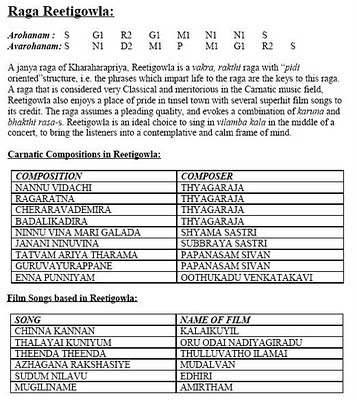Dear Rasika, The wonderful thing about Ragas in the Indian Classical music system is that they are unique, and each one of them have something that is typically only associated with them, that which is irreplaceable. It is easy to fool an average listener in a little game of "Identify the raga" in a post-dinner Carnatic music party, and chuckle as he identifies a Sri raga as a Madhyamavati or a Pharas as a Mayamalavagowla..but how many of us self-confessed aficionados of this great system really have a fool-proof method of unambiguously identifying, each time, every time, the raga correctly? I doubt very many of us do, and this includes the smug critic or the know-it-all mama-mami duo next door. Lets face it - there are many factors that go into identifying a raga - the musical intelligence of the person who is playing or singing in the specimen recording, the level of sophistication of the music system, the extent of deafness of the listener or the lack of it, peer pressur...

Excellent explanation and Vocal presentation of my favorite Ragam. Charu you are becoming the Jewell in the crown day by day!
ReplyDeletewonderful exposition of the raga, and such soulful rendition ..truly inspirational.. dear Ms. charulatha..
ReplyDeleteI am looking for the notations of enna punniyam seytheno.. would you pls be able to suggest some links to sites where I can get the same..
also wondering whether the gamakam for ma is from ga or sa??
Thanks again for this wonderful snippet .. also pls do a piece on raga JOG.. people say it is similar to nattai , but to me both are worlds apart when it comes to the feeling both evokes even though the notes per se may be same... what is your take on this..
Giridhar R Nair (giridhar.nair@gmail.com)
Hello There. I found your blog using msn.
ReplyDeleteThis is an extremely well written article.
I will be sure to bookmark it and return to read more of your useful info.
Thanks for the post. I will certainly comeback.
my website - natural garcinia cambogia